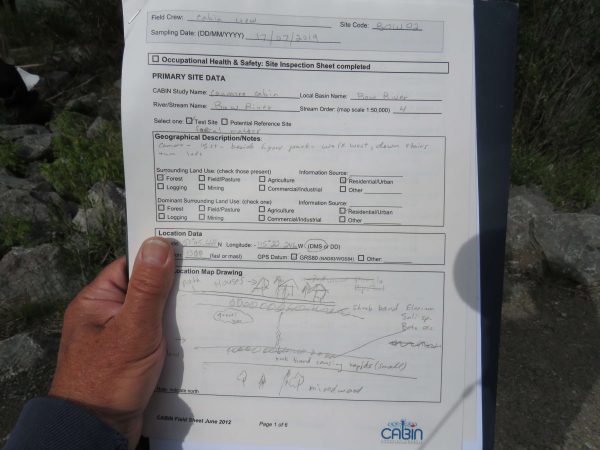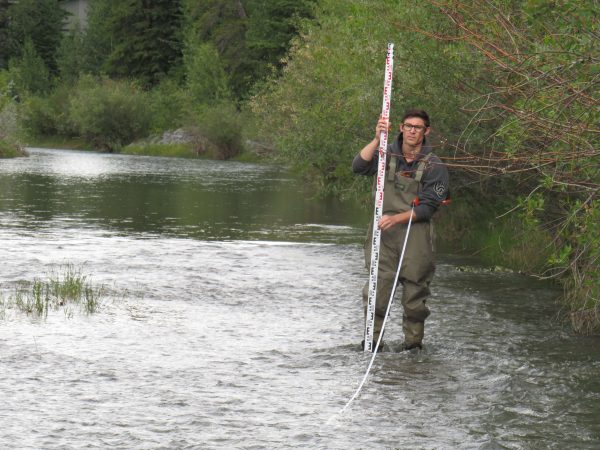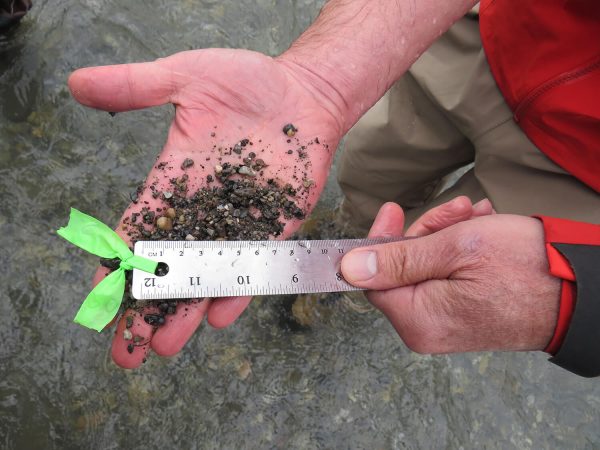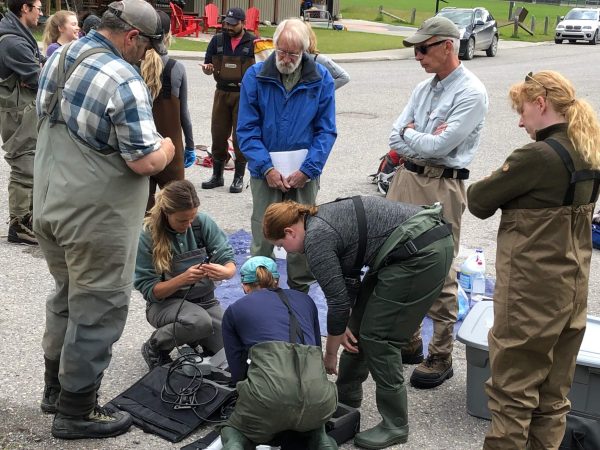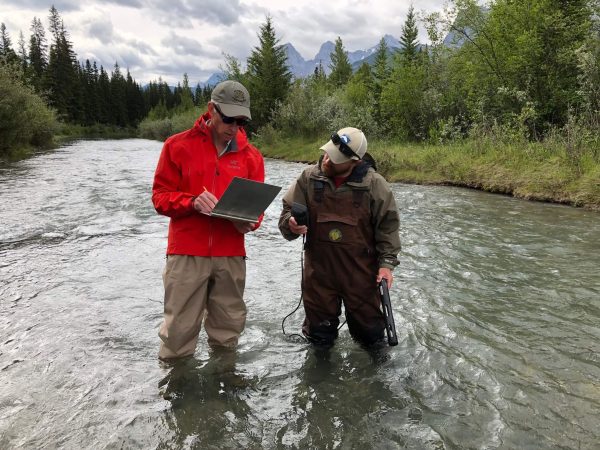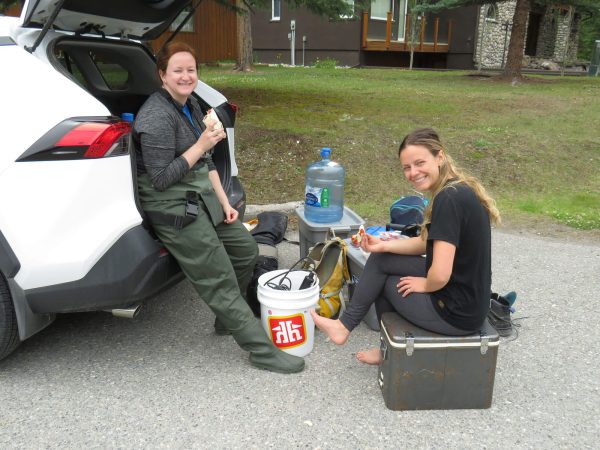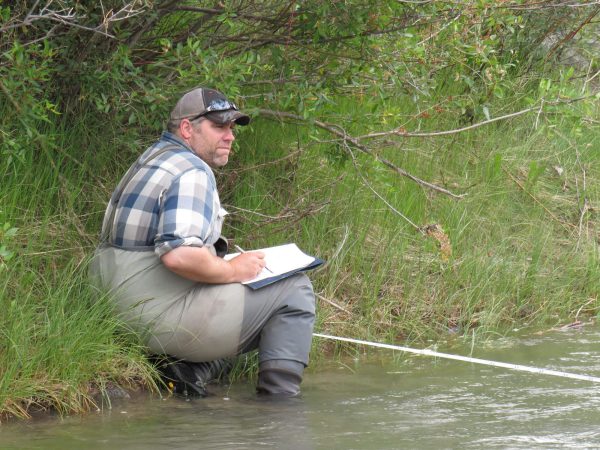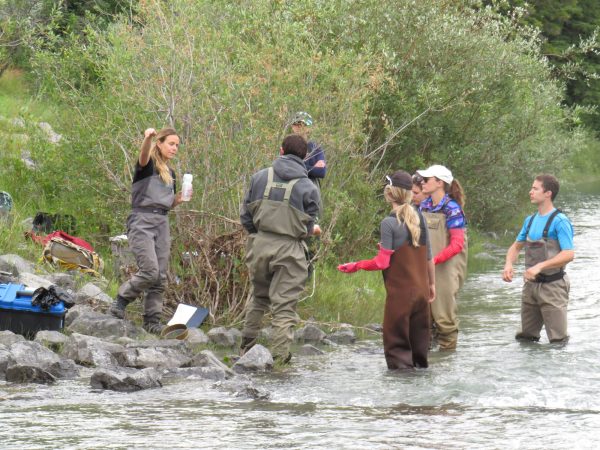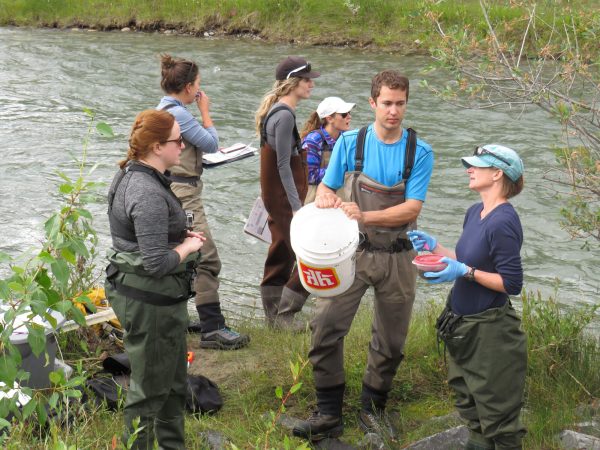A Passion Project: Community-Based Water-Monitoring meets eDNA
Submitted by Alexander Elliot, Canadian Conservation Corps Volunteer
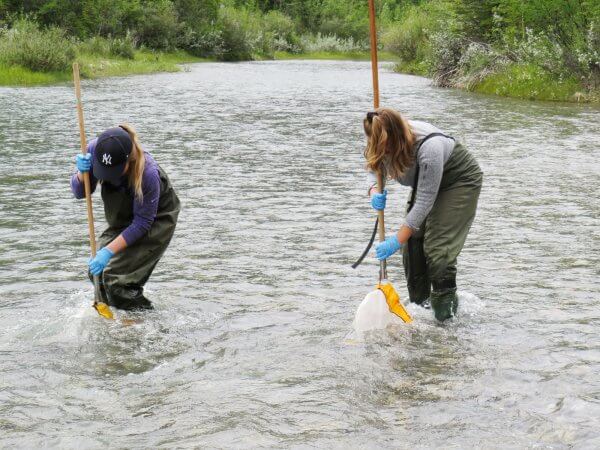 It was mid-July in Canmore and I found myself knee-deep in a stream vigorously kicking my feet in an attempt to dislodge bugs from their aquatic homes. Since having completed school, I had been looking for a way to combine two of my passions: molecular biology and the environment – an odd pairing at first glance, but a powerful tool when given the chance. However, the path to my involvement with the STREAM program was not a straight run; it was full of turns and riffles that eventually got me involved.
It was mid-July in Canmore and I found myself knee-deep in a stream vigorously kicking my feet in an attempt to dislodge bugs from their aquatic homes. Since having completed school, I had been looking for a way to combine two of my passions: molecular biology and the environment – an odd pairing at first glance, but a powerful tool when given the chance. However, the path to my involvement with the STREAM program was not a straight run; it was full of turns and riffles that eventually got me involved.
Before having ever heard of STREAM or CABIN, I started volunteering as part of the Canadian Conservation Corps. This is a new federal program aimed at getting young people from across Canada involved in environmental stewardship.
This journey took me from Calgary, AB to Hamilton, ON and eventually to Victoria, BC. With 11 other people from across the country, I got to explore Canada’s wilderness. A month in Ontario adventuring through Algonquin Park was followed by helping manage invasive species at Fort Rodhill for their fall season. As quick as it began, it was over and I found myself back in Calgary, looking for my next opportunity and wondering how I could contribute to the ideals learned over the previous four months.
While I’m passionate about the environment, I’ve always had a keen interest in molecular biology. Knowing the fundamentals of DNA and the information to be gained from its analysis, I wanted to help the public better understand these tools and to normalize their use in environmental monitoring. The goal was to have a sustainable, long-lasting project that incorporated biomonitoring while leveraging modern sequencing techniques; I had many preliminary ideas that involved developing a project from the ground up.
I was fortunate to come across the STREAM program through Living Lakes Canada. Their initiative had all of the aspects I was looking to develop and then some: a large biomonitoring network that was expanding its reach to incorporate modern molecular techniques in the watershed that I lived in – how fortunate!
While I was very excited about the project, others took a little convincing to develop an interest in the program. For months, I reached out to different community groups, First Nations, academics and members of industry.
Trying to reach such a diverse audience was challenging; so was determining what individual groups’ mandates and limitations were and how STREAM could contribute to the success of their projects. In some cases, it was improving monitoring on existing projects, while other groups were interested in starting biomonitoring projects for the first time.
It felt like a slow start, but by the time the course was held, there were 18 participants! Even though the weather wasn’t the most co-operative throughout the two-day field course, it didn’t stifle the group’s eagerness to learn. The large diversity of experience of both the instructors and participants allowed for thought-provoking dialogue and exchange of information.
The course took place in the Bow River, a whirling-infected watershed. Whirling disease (Myxobolus cerebralis) is a parasite that affects the development of trout and salmon. While whirling disease is already in numerous Albertan watersheds, the government is working hard to prevent its further spread and has implemented a decontamination protocol to be used by all researchers in a whirling-affected area.
The decontamination protocol was tedious and time-consuming, but ultimately in the best interest of the ecosystems that we were trying to better understand. We were even given a crash course in the decontamination protocol from the pros with the Alberta government. We met with their mobile decontamination team after the course and cleaned all of the equipment and waders that we had used. With their help, the clean-up went much quicker than sanitizing all of the equipment in a tiny hotel room.
As luck would have it, the day after the course some of the participants were headed out to take their first sample for a project they had planned after completing a multi-year study. The timing of the CABIN course had come at an ideal time for the Ghost Watershed Alliance as they were looking to implement a water monitoring system to address information gaps they had found in their watershed.
It was good practice to collect samples that were actually going to be used in the CABIN database as opposed to collecting practice samples, reinforcing the skills we had just learned. This day was no exception and we had a full gamut of weather, from clear skies and sun to rain and hail, a common occurrence in the Bow Valley. Despite the changing weather and having had two previous days of intensive training, spirits were high and everyone felt even more confident in their ability to collect samples.
After the two days of practice and a day of sampling, exchanging information, badgering our instructors with questions and learning how to decontaminate all of our equipment, everyone went home a little wiser and a lot wetter, bringing back with them the knowledge gained for their own projects. I know that I am already looking forward to the next time I can go sampling.
